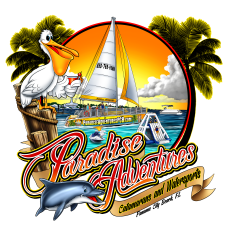The History of St. Andrew’s Bay and Panama City Beach, Florida

Florida, with its unique geographical location and temperate climate, has been a coveted territory for centuries. The history of St. Andrew’s Bay and Panama City Beach mirrors the broader story of Florida — a tale of indigenous tribes, European explorers, pioneers, and modern developers.
Indigenous Inhabitants:
Before the arrival of European explorers, the region around St. Andrew’s Bay was home to indigenous tribes, including the Muscogee (Creek) peoples. These tribes established communities, trade networks, and ceremonial grounds, deeply interweaving their lives with the landscape. Archaeological digs around the bay have uncovered pottery, tools, and burial mounds that tell a story of complex societies that existed long before European contact.
European Exploration and Settlement:
In the 16th century, Spanish explorers began to sail near the Gulf Coast of Florida, seeking new territories and routes for trade. While the Spanish presence in St. Andrew’s Bay was fleeting, their introduction of European diseases had a devastating impact on indigenous populations.
By the 1700s, British and later American settlers began to show interest in the region. They recognized the strategic importance of the bay and its potential as a port. During this period, conflicts between settlers and indigenous tribes increased, leading to the displacement of many native communities.
19th Century Development:
The 19th century was transformative for the St. Andrew’s Bay area. The United States acquired Florida from Spain in 1821. Soon after, settlers recognized the potential of St. Andrew’s Bay as a trading port. As trade routes developed, so did settlements around the bay. The town of St. Andrew, which would later merge with others to form Panama City, was established during this period.
The Birth of Panama City Beach:
In the early 20th century, a significant event reshaped the region’s future: the construction of the Panama Canal. As ships began to traverse this new waterway, a greater emphasis was placed on ports near the Gulf of Mexico. It was around this time that Panama City was officially incorporated, merging smaller settlements like St. Andrew.
With the rise of Panama City, the adjacent beach area began to draw attention for its pristine white sands and clear waters. By the 1930s, Panama City Beach started to develop as a vacation destination. Entrepreneurs and developers saw the potential for this beachfront paradise to attract visitors from all over the country.
World War II and Post-War Boom:
The onset of World War II brought unexpected changes. The U.S. military recognized the strategic value of the bay and surrounding areas. Naval bases and airfields were established, bringing a sudden influx of military personnel.
Post-war, many servicemen who had been stationed in the area returned, drawn by its beauty and potential. The post-war economic boom in the United States also meant that more Americans had disposable income to spend on vacations. This led to a surge in tourism for Panama City Beach during the 1950s and 1960s. Hotels, motels, and attractions sprang up to cater to this new wave of tourists.
Modern-Day Panama City Beach:
From the late 20th century to the present, Panama City Beach has grown and evolved, facing both challenges and opportunities. The region has faced hurricanes and natural disasters but has always rebounded, a testament to the resilience of its community and the enduring allure of its beaches.
Today, Panama City Beach is known not only for its stunning shoreline but also for its vibrant culture, a mix of southern hospitality and beachfront relaxation. Events like the annual Seabreeze Jazz Festival and attractions like Pier Park have solidified its reputation as a prime vacation destination.

Conclusion:
The history of St. Andrew’s Bay and Panama City Beach is rich and multifaceted. From its ancient indigenous roots to its development as a premier tourist destination, the region has continually transformed while maintaining its natural beauty and charm. Today, as visitors stroll along its shores or dive into its turquoise waters, they are partaking in a tradition that has been centuries in the making.
